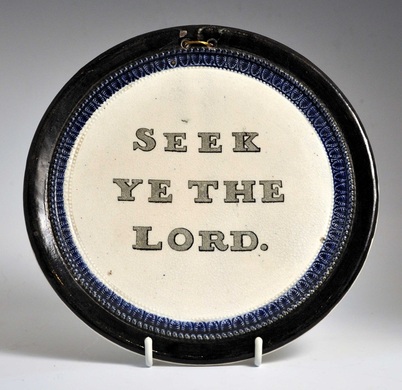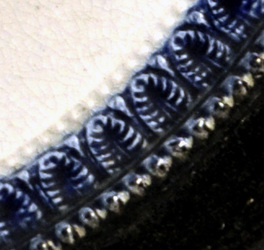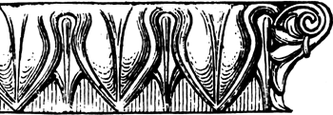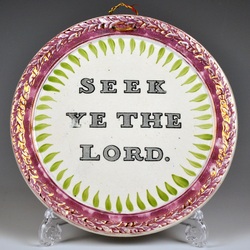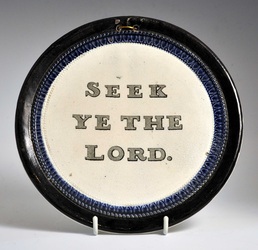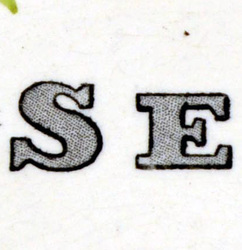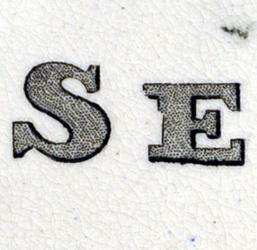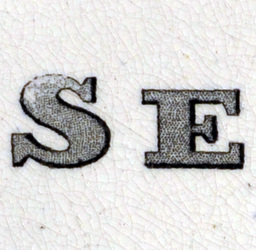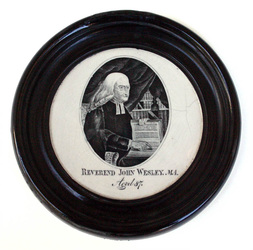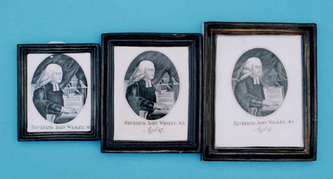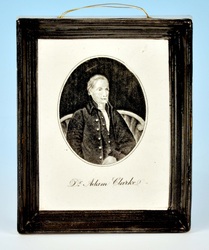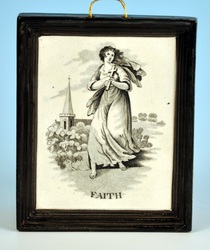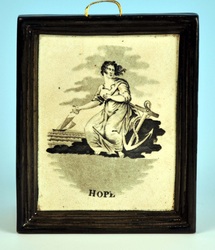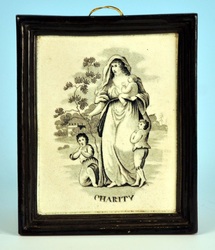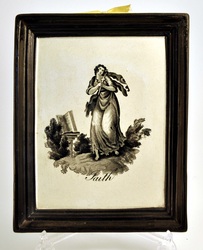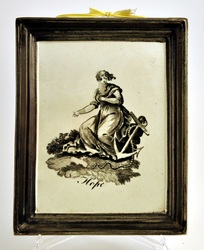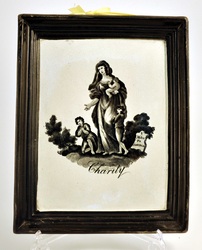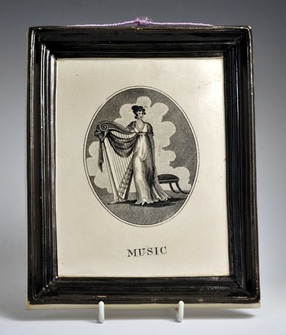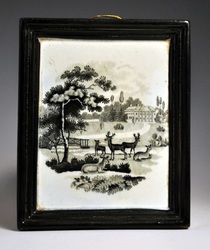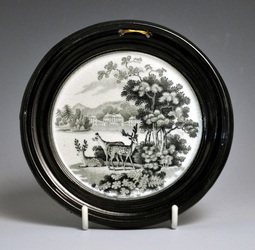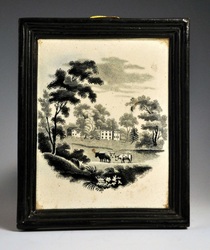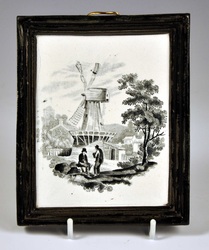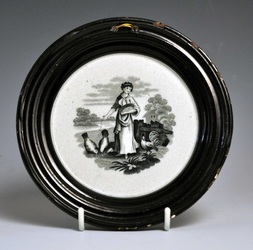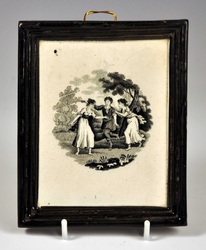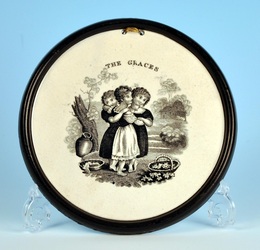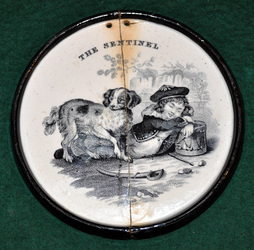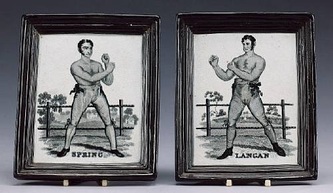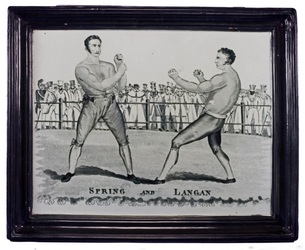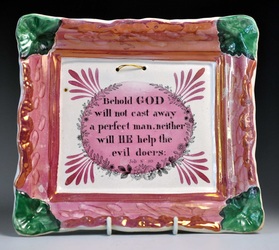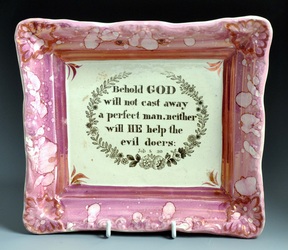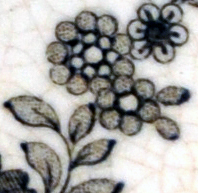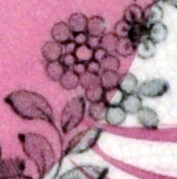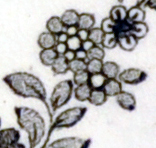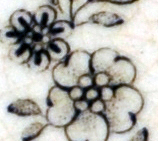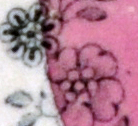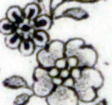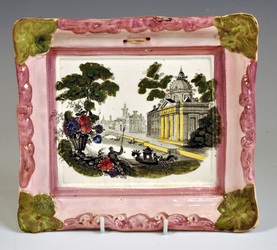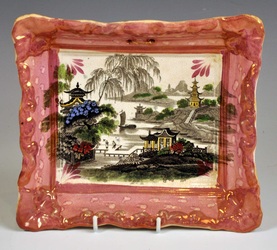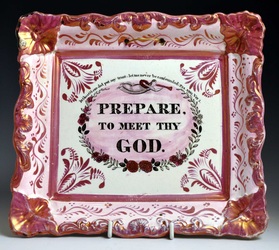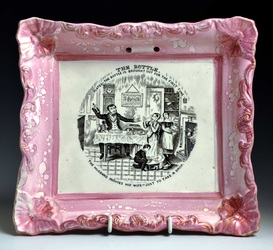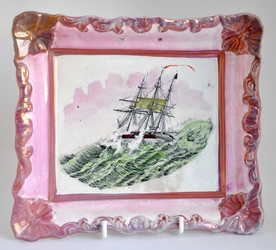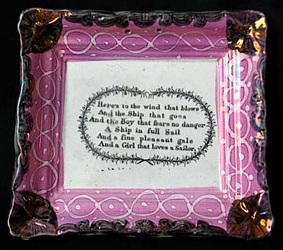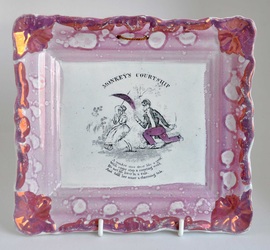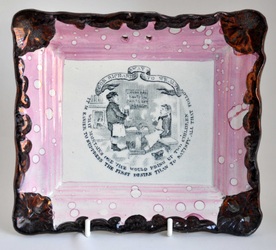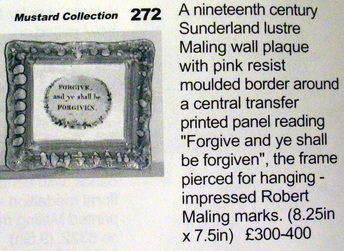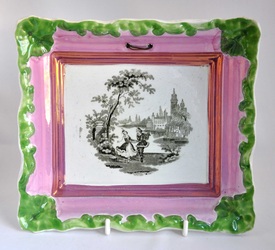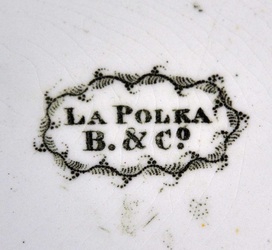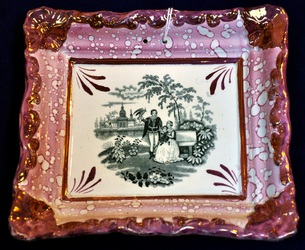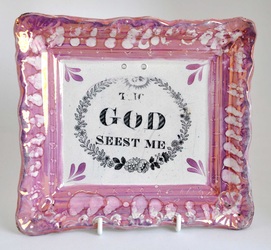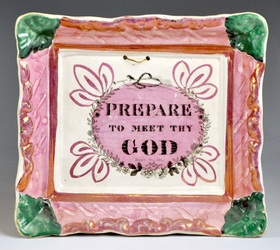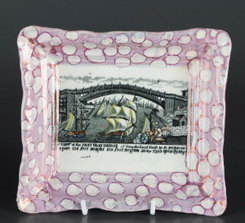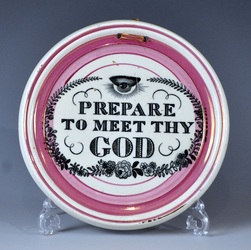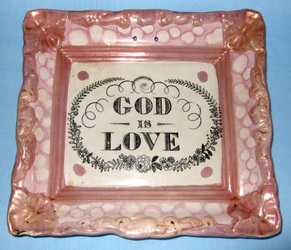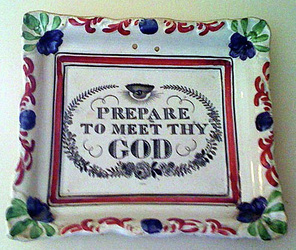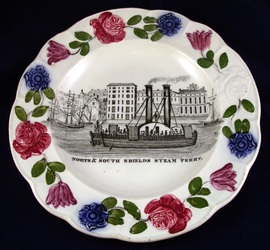|
I search fairly obsessively for plaques, and very occasionally my persistence is rewarded with something special. The best finds are those that are badly listed on the internet, or in auction catalogues, that there's a chance nobody else has seen. Those finds are few and far between. However, I bought the plaque below recently for under £30. It has a less common verse that appears on plaques attributed to Maling, and plaques from another, as yet unidentified, Tyneside pottery. The border is finely moulded with something similar to a 'leaf and dart' motif (see below). I can't recall seeing this moulding on any other plaques. So is the plaque attributable to Maling, like the one left below, or to the other Tyneside pottery, like the plaque below right? Look at the black outline around the letters in the details (click to enlarge). The plaque with the 'leaf and dart' border (in the centre), appears much closer to the unidentified Tyneside pottery on the right, but I'm not certain they are from the same transfer plate. The plaque moulds are also very similar, and the plaques unusually thin. There must be other plaques out there with this border. If you have one, please get in touch.
0 Comments
Most of the plaques on this site come from the North East of England. However, at least one pottery in Staffordshire was prolific in making circular and rectangular black and white transfer-printed plaques. I have a small collection of these, some of which I've just got around to photographing. The John Wesley and Adam Clarke transfers most commonly appear on 8" x 6.5" plaques, like the Clarke on the right above. In fact, I haven't recorded Clarke on any other size. Wesley, however, appears on a whole range of sizes (see above centre), and also extremely rarely on circular plaques (above left). The circular Wesley plaque has the under-glaze inscription on reverse 'H.B. 1832'. 1832 is the year of Clarke's death, and some of these plaques may have been sold in Wesley-Clarke pairs to commemorate that. Probably the most common transfers on this plaque form are Faith, Hope and Charity (see above). The plaques come in two different sizes: small, 5.5" x 4.5", on the top row; and large, 8" x 6.5", on the bottom row. The two sizes have different transfers. The smaller size is rarer. The larger plaques are sometimes found with black and yellow borders, or white borders for factory seconds (see the Staffordshire plaques page). The music plaque above (8" x 6.5") is superb, and relatively rare. It may be one of a series of transfers symbolising the arts, but if so, I've never seen any of the others: painting? theatre? dance? The Willett Collection in Brighton has, I recall, a similar plaque with a classical subject, but the search function on their site is down at present, so I can't provide the link. The first four plaques above show landscapes with deer, cows and a windmill (click to enlarge). The bottom centre plaque, which appears to be identical in form to the circular Wesley above, has a transfer of a girl feeding chickens, and the bottom right shows a game of blind man's bluff. The rectangular plaques are 5.5" x 4.5", and the circular plaques are 5.5" and 6" diameter respectively. The above small plaques titled 'THE GRACES' and 'THE SENTINEL' have a very different form and feel to the other plaques above. Page 199 (757) of Riley (Gifts for Good Children) shows a similar alphabet plate, titled 'THE SENTINEL' with the impressed mark T.& B. GODWIN. NEW WHARF. (New Basin Potteries, Burslem, Staffordshire 1809-1834). Page 37 of Gibson (19th Century Lustreware, 2000) shows another similar plaque with two girls. As an antidote to the rather twee plaques above, here are some magnificent plaques of the boxers Spring and Langan. Read more about them on the Portraits page. The larger size of the single plaques sometimes appears with black and yellow borders. The right plaque is huge, measuring 16.5" x 13", and appears with black and yellow, and red/puce borders.
4/14/2013 1 Comment A footnote on FellI got out my camera this morning to catch up with photographing plaques, and to allow a more detailed comparison of the transfers on three plaques below. I'm now certain that all three came from the same transfer plate. Look at the identical way the black is distributed on the leaves in the first detail (click to enlarge and to move between images). Even better, note the black fleck to the right of the flower in the second detail, on the two rectangular plaques. The transfer plate must have acquired this tiny scratch sometime after the circular plaque was produced. The thing of note here is that the third plaque has hanging holes pierced through the outer lustre border (see my previous post on the subject). So it appears that Fell produced rectangular plaques with hanging holes in two different positions (compare it with the plaque beside it). That means that we can't rule out Fell as the maker of the as-yet unattributed plaques below. However, as discussed before, Fell is the only pottery known to have produced plaques from similar moulds pierced beneath the lustre border.
Two and a half years ago I wrote about plaques with 'scalloped' corners. I'm not sure that that's the perfect description for them - Ian Sharp calls them 'butterfly' corners. Moore & Co (Sunderland) made larger-sized versions of these plaques in the 1840s (see below). All other variations of this plaque form appear to come from Tyneside. Both Robert Maling (below left and right) and CT Maling (below centre) made smaller plaques of this form in the 1840-50s. Many Tyneside plaques of similar size are unmarked and, naively, I wanted to attribute them all to Maling. Many have green decoration, a feature common on early Maling plaques (but a feature associated with Tyneside pottery in general). My prejudices were reinforced when I saw the entry below in an old Railtons' auction catalogue. Many of the unmarked plaques have similar religious verses, with a wash of pink lustre over the central transfer, so my attribution seemed to gather strength. The first challenge came discovering the plaques below, both marked B.&Co, so surely not Maling. Ian Sharp identified them as Burn & Co, from the Stepney Bank Pottery, 1852-1860. So green decoration on plaques, certainly wasn't unique to Maling. In my last blog post, I identified a further group of these plaques as Fell & Co. They were often washed with lustre over the central transfer, so that's another feature we can't solely attribute to Maling (those with eagle eyes will have noted that the first Moore & Co plaque above also shares this feature). This week I remembered the bridge plaque below, from the Anderson and Garland website. The transfer appears on marked wares by Galloway & Atkinson at the Albion Pottery, c1864. I'm unsure whether the plaque below is marked, but the auction house identifies it as Albion Pottery. So nearly all the larger Tyneside potteries produced plaques with scalloped corners. This brings me to my final examples below. The obvious attribution for these plaques is from one of the North Shields partnerships (Low Lights Pottery) of John Carr. They share the same transfers as later Carr-attributed items. But I previously resisted this attribution on the grounds that the plaques below look nothing like their later counterparts, and in fact have features more commonly associated with Maling. But we now know that nearly every pottery on Tyneside was using this rectangular plaque form. And at least two other potteries, Burn and Fell, used green decoration. I'm now more confident about attributing the plaques below to Carr. Take a look at the items below. The ferry plate on the left has the impressed mark C.C.&Co. The ferry started in 1829, so the initials could stand for Cornfoot, Colville & Co (1828-32), or for the later North Shields partnership, Cornfoot, Carr & Co (1832-38). Note the similarity of decoration to the third plaque above. The later plaque, on the right below, again with similar decoration, is attributed to John Carr & Sons (c1870). For more information on dates see the North Shields partnerships page. Although we've already shown that decorative similarities must be treated with some caution, it is great to have this link. Of course, the strongest basis for this attribution is the use of the same series of transfer plates. The copper plates did sometimes move between potteries, but usually after a pottery closed down and its effects were auctioned off. Whereas the Carr partnerships in North Shields ran from 1832 almost to the end of the century, so there's no obvious reason for them to let the transfer plates go.
So I've got more work to do reorganising these pages. My best guess is that the two scalloped cornered plaques above belong to the Carr and Patton, 1838-46, period at North Shields. As new items emerge, the picture becomes clearer. Who knows what will turn up in the next three years. |
AuthorStephen Smith lives in London, and is always happy to hear from other collectors. If you have an interesting collection of plaques, and are based in the UK, he will photograph them for you. Free advice given regarding selling and dispersal of a collection, or to those wishing to start one. Just get in touch... Archives
February 2022
AcknowledgementsThis website is indebted to collectors, dealers and enthusiasts who have shared their knowledge or photos. In particular: Ian Holmes, Stephen Duckworth, Dick Henrywood, Norman Lowe, Keith Lovell, Donald H Ryan, Harold Crowder, Jack and Joyce Cockerill, Myrna Schkolne, Elinor Penna, Ian Sharp, Shauna Gregg at the Sunderland Museum, Keith Bell, Martyn Edgell, and Liz Denton.
|
